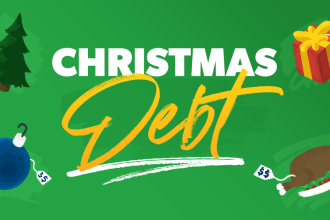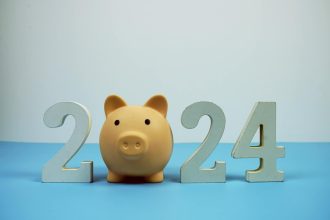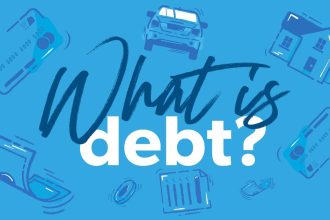THIS POST MAY CONTAIN AFFILIATE LINKS. PLEASE SEE MY DISCLOSURES. FOR MORE INFORMATION.
Next time you’re out shopping for your everyday essentials, here’s something to keep in mind.
Did you know that being a woman could mean you end up paying more for the same products?
The ‘pink tax’ is a term used to describe the pricing disparity between products aimed at women and those targeted at men.
It’s a real issue that can lead to women paying more for the same or similar items.
While the pink tax isn’t a tax but a pricing strategy, it can add an average of 7% more to women’s products than the same or similar products marketed toward men.
It’s subtle, but it is a very common issue across many different industries, from clothes to personal care items.
In this article, we will examine 24 things that women have to pay more for than men and shed some light on this unfair practice.
We have chosen these 24 things because they are commonly purchased by both men and women, but the prices for women are significantly higher.
Hopefully, by bringing attention to this issue, you will be more aware of the pink tax and can make informed decisions when buying products in the future.
#1. Haircuts

If you have gone to a salon recently, you may have noticed that even a simple trim can cost women much more than men.
Even if the haircut isn’t more complex, it will cost more just because of the gender of the individual getting it cut.
#2. Hair Care Products


Shampoo and conditioner marketed to women can cost as much as 48% more than shampoo and conditioner for men.
However, the ingredients in these products are often very similar, but they sometimes state that there are special ingredients just for women.
#3. Razors


Why would a pink razor cost more than a blue razor if they work the same?
Women’s razors are often priced as much as 11% higher than men’s, even though they may have the same number of blades or similar features.
#4. Clothing


When it comes to clothing, women usually have to pay more for similar items as men.
Whether it is pants, sweaters, shirts, or jeans, women’s clothes can cost up to 15% more than men’s.
#5. Lotion


Just like body wash, lotion marketed for women often has the same ingredients and benefits as men’s lotion but is more expensive.
Women’s lotion can cost as much as 11% more than men’s, simply because it is targeted towards a female audience.
#6. Dry Cleaning


Dry cleaning is another area where women are charged more than men.
It is not uncommon for women to be charged twice as much as men for the same type of clothing because some dry cleaners have a separate pricing system for “men’s” and “women’s” clothing, with women’s items costing much more.
#7. Houses


When it comes to purchasing a house, women often face higher costs than men.
Besides paying %2 more for their homes, women are charged more for mortgage rates simply because of their gender.
#8. Baby Products


Even when it comes to baby products, there is a gender price gap.
Baby items marketed towards girls, such as pink clothing and toys, tend to cost more than the same items marketed toward boys.
#9. Services


We already discussed haircuts, but other services, such as massages and physical therapy, also show a gender price gap.
Even though women are paid less than men on average, they are still charged more for the same services.
#10. Healthcare


Emergency care, office visits, and lab work are just a few of the healthcare services that women often pay more for than men.
This may be because men put off going to the doctor more often, and they most likely don’t have tests done as frequently as women do, which makes medical companies charge more for the same services.
#11. Adult Diapers


Even though incontinence affects both men and women, companies often charge more for “feminine” versions of adult diapers.
There is no difference in how the diapers function, yet women are expected to pay more simply because of the gendered label.
#12. Canes


When a woman needs a cane as she gets older or injured, she will have to pay 12 % more than a man when he buys one.
Canes for women are often marketed as fashionable accessories, while those for men are seen as strictly functional.
#13. Watch Bands


When a woman decides to buy a pretty new watch band it comes at a higher cost than a man’s watch band does.
Many companies market “women’s” watch bands as delicate and decorative, with higher prices compared to “masculine” styles that are seen as more durable and functional.
#14. Cars


Women are often charged more for the same car because car dealerships may use stereotypes about women being less knowledgeable about cars to justify these higher prices.
In reality, there is no difference in ability between men and women when it comes to purchasing and maintaining a car, but that doesn’t stop the price differences.
#15. Over The Counter Medications


Women are often charged more for the same over-the-counter medications, such as laxatives, even though there is no difference in the product itself.
Pain relievers and other medications that are marketed with specific versions for women tend to be more expensive, even though the ingredients are the same.
#16. Tech Stuff


This gender pricing gap is even more pronounced in the tech industry, where women often pay more for products and services that are marketed toward them.
From fitness trackers and earbuds to laptops and phones, women are charged higher prices for essentially the same products as men.
#17. Fragrances


This gender pricing gap is also evident in the beauty industry, where women are often charged significantly more for fragrances marketed toward them.
Despite having similar ingredients and packaging to men’s fragrances, women’s perfumes usually cost more per ounce than men’s colognes.
#18. Sunglasses


Sunglasses are sunglasses, right? Not when it comes to the gender pricing gap.
Women’s sunglasses are often pricier than men’s despite being made from the same materials in both designer and non-designer brands.
This shows that gender pricing extends beyond high-end products.
#19. Vitamins and Supplements


Even in the health and wellness industry, women are typically charged more for vitamins and supplements specifically marketed toward them.
This is despite these products often containing similar ingredients to those marketed towards men.
#20. Bicycles


Bicycles for women and men are not that different from each other, except in price.
Women’s bicycles are often more expensive despite being made from the same materials and having the same features.
#21. Pens


If you shop for pens as a gift for a woman, you may notice that they are often marketed as “for her” and come in pastel colors.
These pens are usually priced higher than regular pens despite having the same functionality and quality.
#22. Financial Advice


Even with all the women in the workforce and taking on important financial roles many financial advisors still target their services towards men.
This often results in women paying higher fees for financial advice or even being told they need additional services that may not be necessary.
#23. Deodorant


Women’s deodorant is marketed as being a gentle product, while men’s deodorant is a more powerful product even when both products are essentially made with the same ingredients.
When you hear the words that say it is “made for just for a woman” you know it will cost more than a product made for a man.
#24. Kids Toys


The difference in pricing between genders starts early with kids’ toys.
Toys marketed toward girls can cost up to 13% more than the same products marketed toward boys.
61 Fun Money Facts


Did you know there are places you can pay for things using a special local currency?
Do you know why some coins have ridges on the sides? Discover over 60 fun money facts that you didn’t know.
61 FUN MONEY FACTS YOU DIDN’T KNOW
Free Samples By Mail


Everyone likes getting free stuff, but many times you have to fill out a survey.
Here are some great ways to get free stuff without strings attached.
16 WAYS TO GET FREE SAMPLES BY MAIL WITHOUT SURVEYS
I have over 15 years experience in the financial services industry and 20 years investing in the stock market. I have both my undergrad and graduate degrees in Finance, and am FINRA Series 65 licensed and have a Certificate in Financial Planning.
Visit my About Me page to learn more about me and why I am your trusted personal finance expert.
Read the full article here














